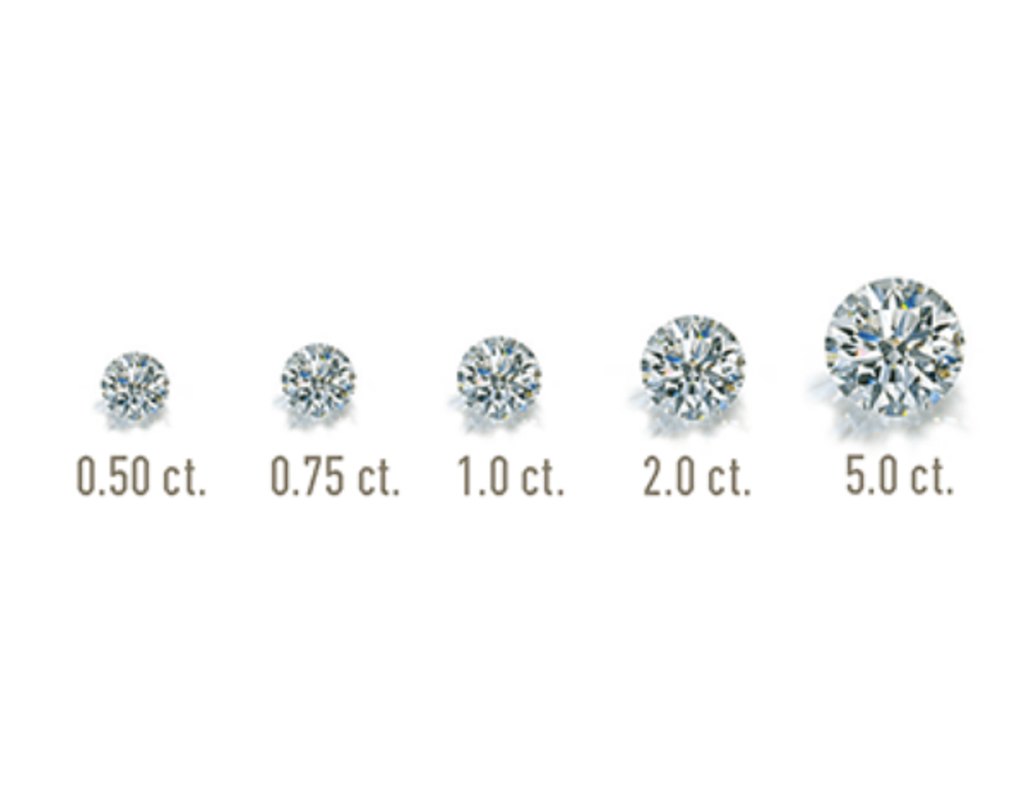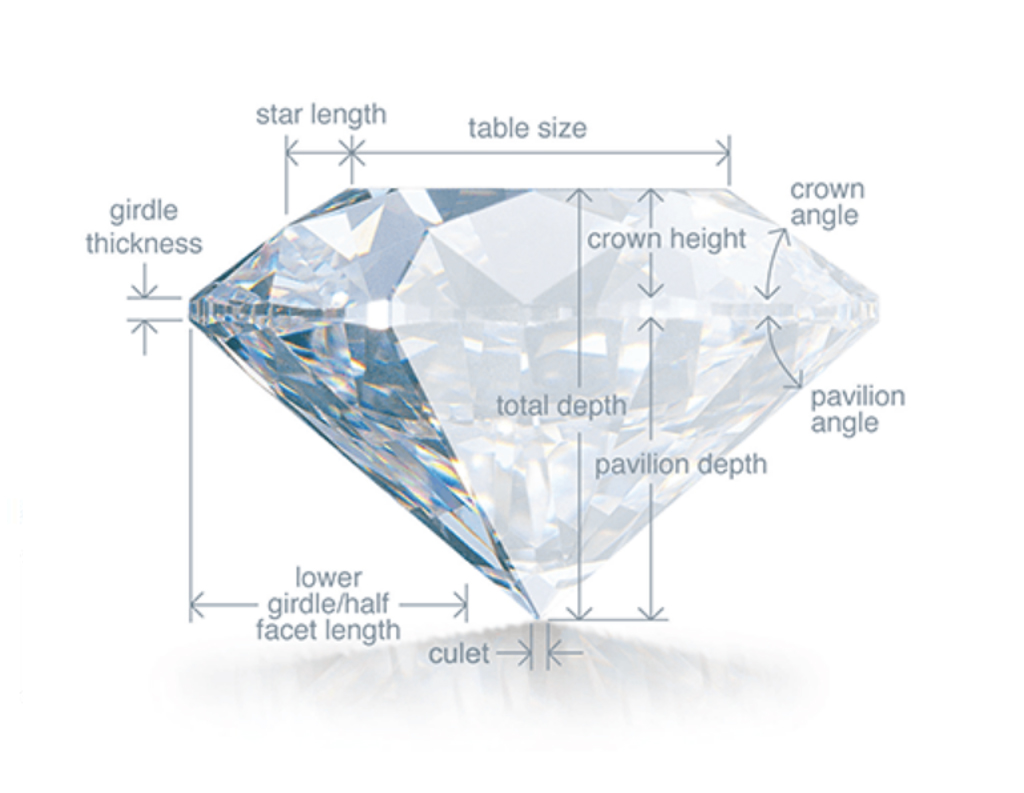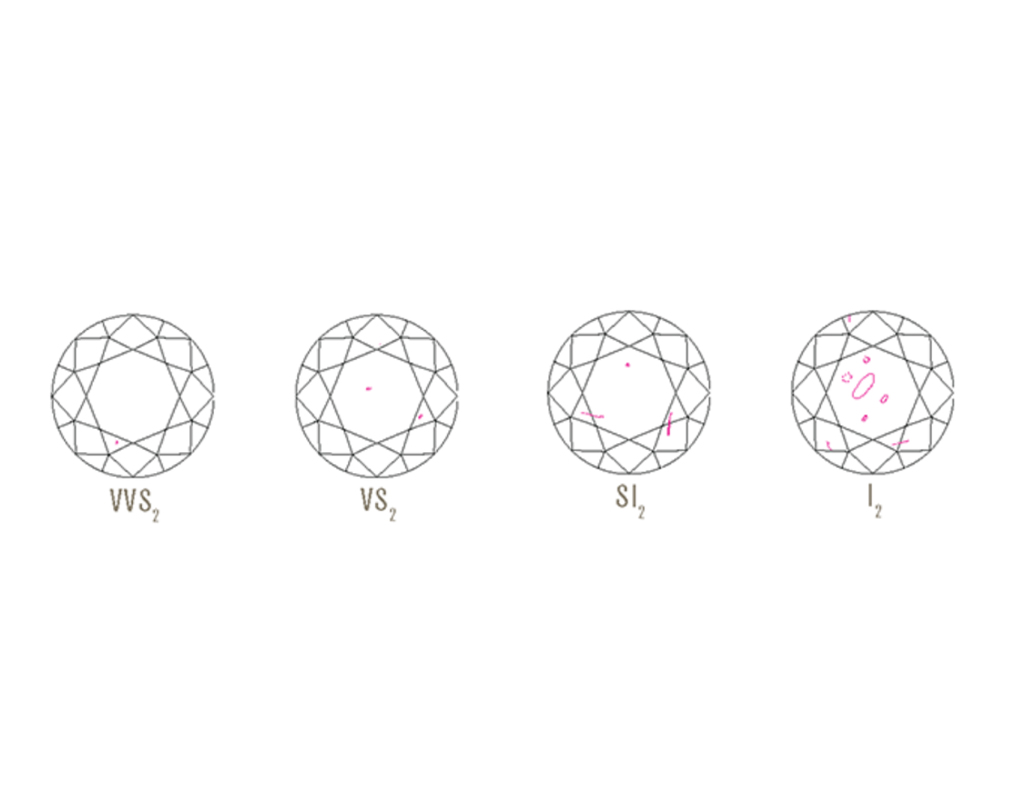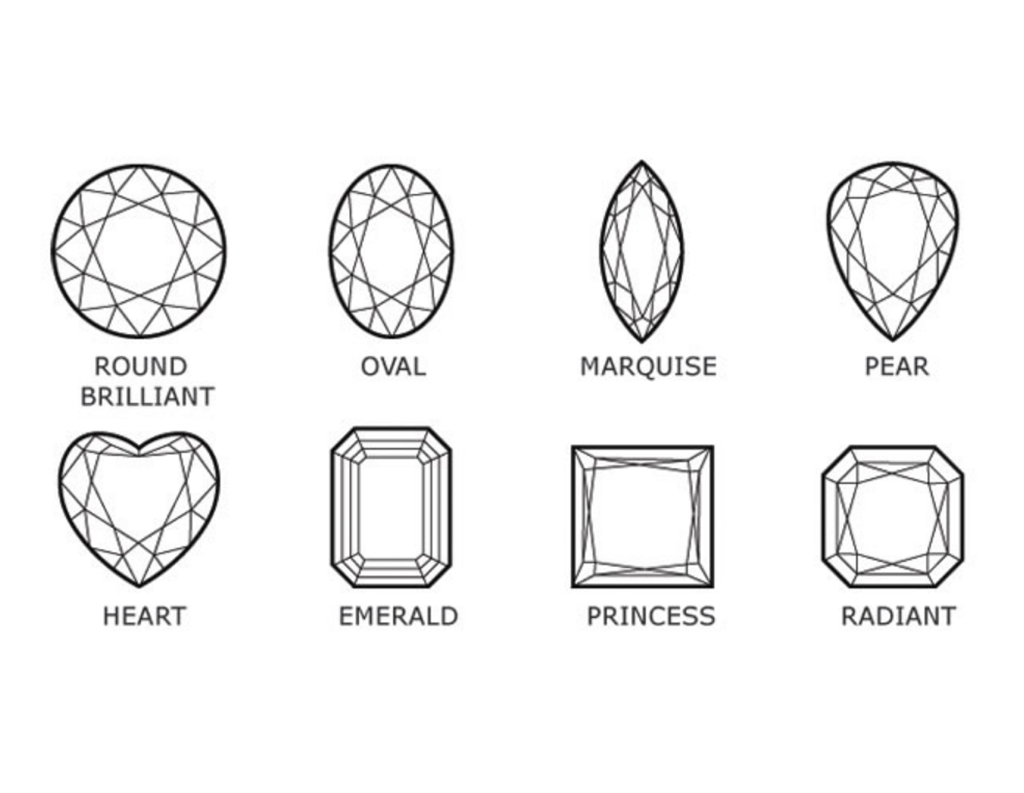Your Perfect Diamond Awaits –
Let Us Help You Find It
At Jack Miller Jewelry Designers, we offer an extensive selection of exquisite diamonds for you to choose from. When creating a custom design, the first step is to decide on the size and shape of the diamond you desire. We then craft the ring to perfectly complement your chosen stone(s). If you’re considering an upgrade or a new shape for an existing ring, we’re also happy to purchase your old diamond. Contact us today to schedule an appointment and explore our wide array of stunning diamonds for your new, beautifully designed ring.
Choosing the Perfect Diamond: A Guide to Understanding the 4 Cs
Explore the essential 4 C’s of diamonds—cut, color, clarity, and carat weight—that define their quality and value. Learn how these factors influence your choice of exquisite diamond jewelry, ensuring each piece reflects your unique style and preferences.

Carat
Diamonds and other gemstones are weighed in metric carats: one carat is equal to 0.2 grams, about the same weight as a paperclip. (Don’t confuse carat with karat, as in “18K gold,” which refers to gold purity.)
Just as a dollar is divided into 100 pennies, a carat is divided into 100 points. For example, a 50-point diamond weighs 0.50 carats. But two diamonds of equal weight can have very different values depending on the other members of the Four C’s: clarity, color and cut. The majority of diamonds used in fine jewelry weigh one carat or less.
Because even a fraction of a carat can make a considerable difference in cost, precision is crucial. In the diamond industry, weight is often measured to the hundred thousandths of a carat, and rounded to a hundredth of a carat. Diamond weights greater than one carat are expressed in carats and decimals. (For instance, a 1.08 ct. stone would be described as “one point oh eight carats,” or “one oh eight.”)
(Source: http://www.gia.edu/gia-about/4Cs-Carat)

Color
Diamond color is all about what you can’t see. Diamonds are valued by how closely they approach colorlessness – the less color, the higher their value. (The exception to this is fancy color diamonds, such as pinks and blues, which lie outside this color range.)
GIA’s color-grading scale for diamonds is the industry standard. The scale begins with the letter D, representing colorless diamonds, and continues with increasing to the letter Z that represents light yellow or brown. Diamonds are color-graded by comparing them to stones of known color under controlled lighting and precise viewing conditions.
Most diamonds found in jewelry stores run from colorless to near-colorless, with slight hints of yellow.
(Source: http://www.gia.edu/gia-about-4Cs-Color)

Cut
Cut is the factor that fuels a diamond’s fire, sparkle and brilliance.
The traditional 58 facets in a round brilliant diamond, each precisely cut and defined, are as small as two millimeters in diameter. But without this precision, a diamond wouldn’t be nearly as beautiful. The allure of a particular diamond depends more on cut than anything else.
Though extremely difficult to analyze or quantify, the cut of any diamond has three attributes: brilliance (the total light reflected from a diamond), fire (the dispersion of light into the colors of the spectrum), and scintillation (the pattern of light and dark areas and the flashes of light, or sparkle, when a diamond is moved).
People often think of diamond cut as shape. Round is the shape used in most diamond jewelry. All other shapes are known as fancy shapes. Traditional fancy shapes include the marquise, pear, oval and rectangle. Hearts, triangles and a variety of others are also gaining popularity in diamond jewelry.
(Source: http://www.gia.edu/gia-about/4Cs-Cut)

Clarity
Because diamonds formed deep within the earth, under extreme heat and pressure, they often contain unique birthmarks, either internal (inclusions) or external (blemishes).
Diamond clarity refers to the absence of these inclusions and blemishes. Diamonds without these birthmarks are rare, and rarity affects a diamond’s value.
Using the GIA International Diamond Grading System™, diamonds are assigned a clarity grade that ranges from flawless (FL) to diamonds with obvious inclusions (I3).
Every diamond is unique. None is absolutely perfect under 10× magnification, though some come close. Known as Flawless diamonds, these are exceptionally rare. Most jewelers have never even seen one.
(Source: http://www.gia.edu/gia-about/4Cs-Clarity)
Other Considerations
When Purchasing a Diamond

Shape
Cut vs. Shape
People often confuse the terms “cut” and “shape” when discussing diamonds. They may mistakenly refer to the cut as the shape or outline of the diamond, rather than recognizing it as the specific arrangement of facets that gives the diamond its appealing face-up appearance.
The most common shape used in diamond jewelry is the round shape. Any other diamond outline is categorized as a fancy shape. Traditional fancy shapes include marquise, pear, and oval, while hearts, triangles, and other unique forms are becoming increasingly popular in diamond jewelry.
(Source: http://www.gia.edu/gia-about/4Cs-Cut)

Cost
Cost is often considered the unofficial fifth C when evaluating diamonds. The primary four Cs—cut, color, clarity, and carat weight—all play a significant role in determining a diamond’s price. The key is to find the right balance between these factors that aligns with your budget.
When working with Jack Miller Jewelry Designers, we can assist you in achieving this balance. With our extensive selection of diamonds and access to sources from around the country, we can bring in diamonds on memo, giving you a range of options to choose from. This allows you to select the stone that best meets your preferences and budget.
Our Location & Shop Hours
Location:
111 North Tejon Street
Colorado Springs, Colorado 80903
Hours:
Tuesday – Friday: 10:00 A.M. – 5:00 P.M.
Saturday: 11:00 A.M. – 4:00 P.M.
Closed Sunday and Monday
Contact Us:

